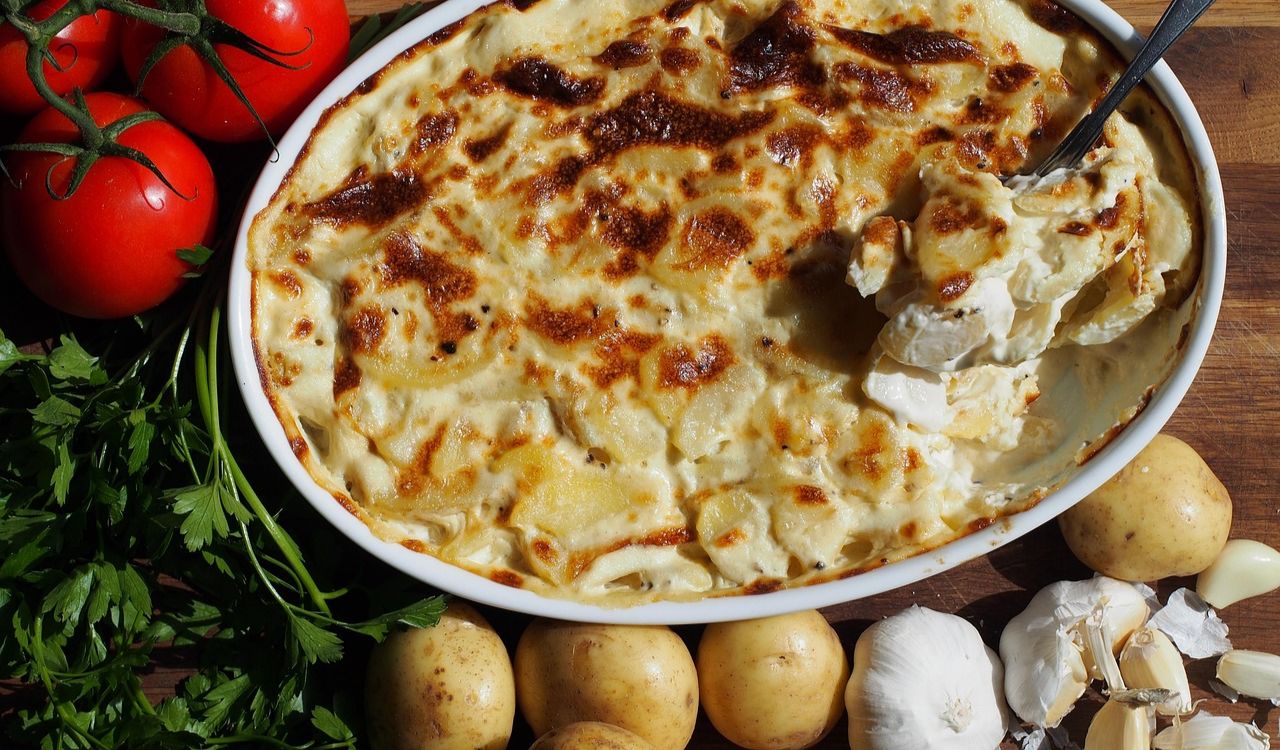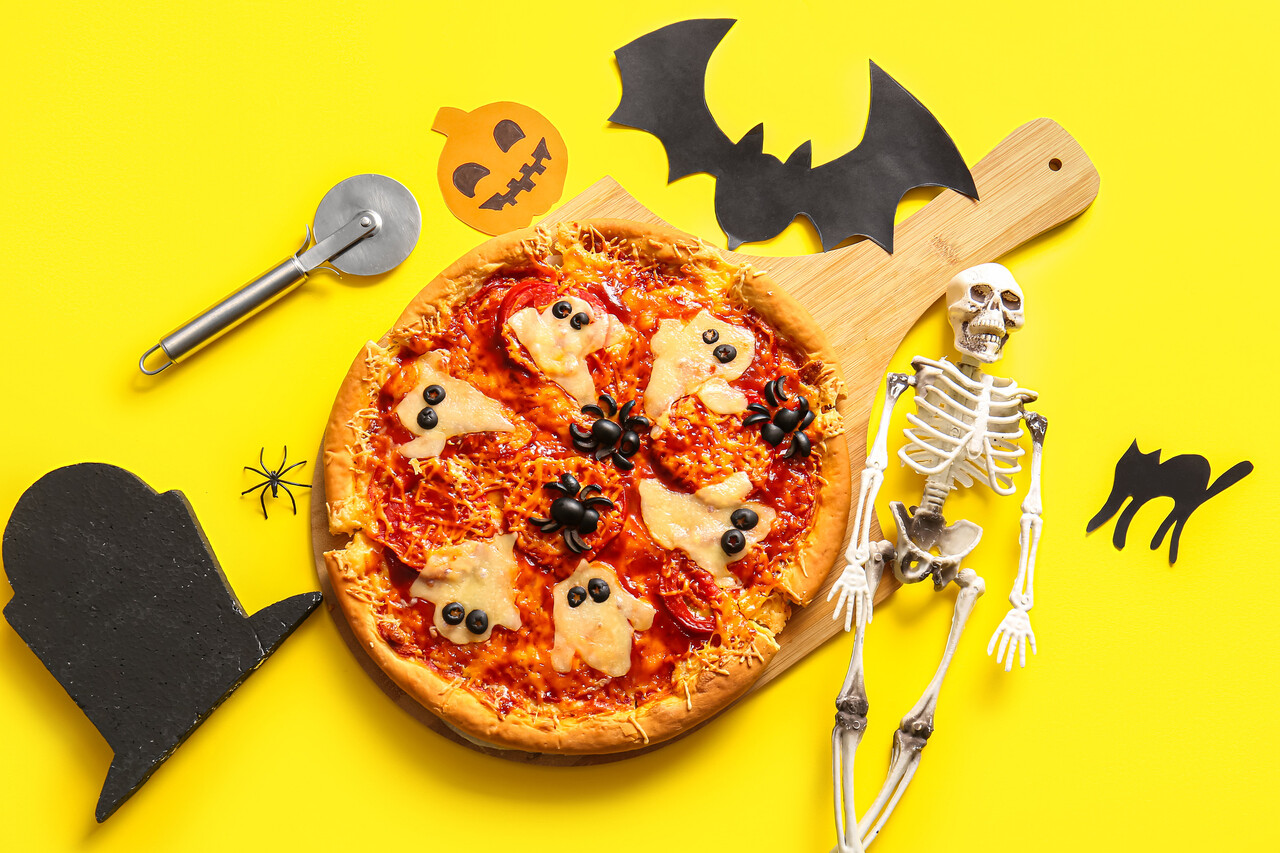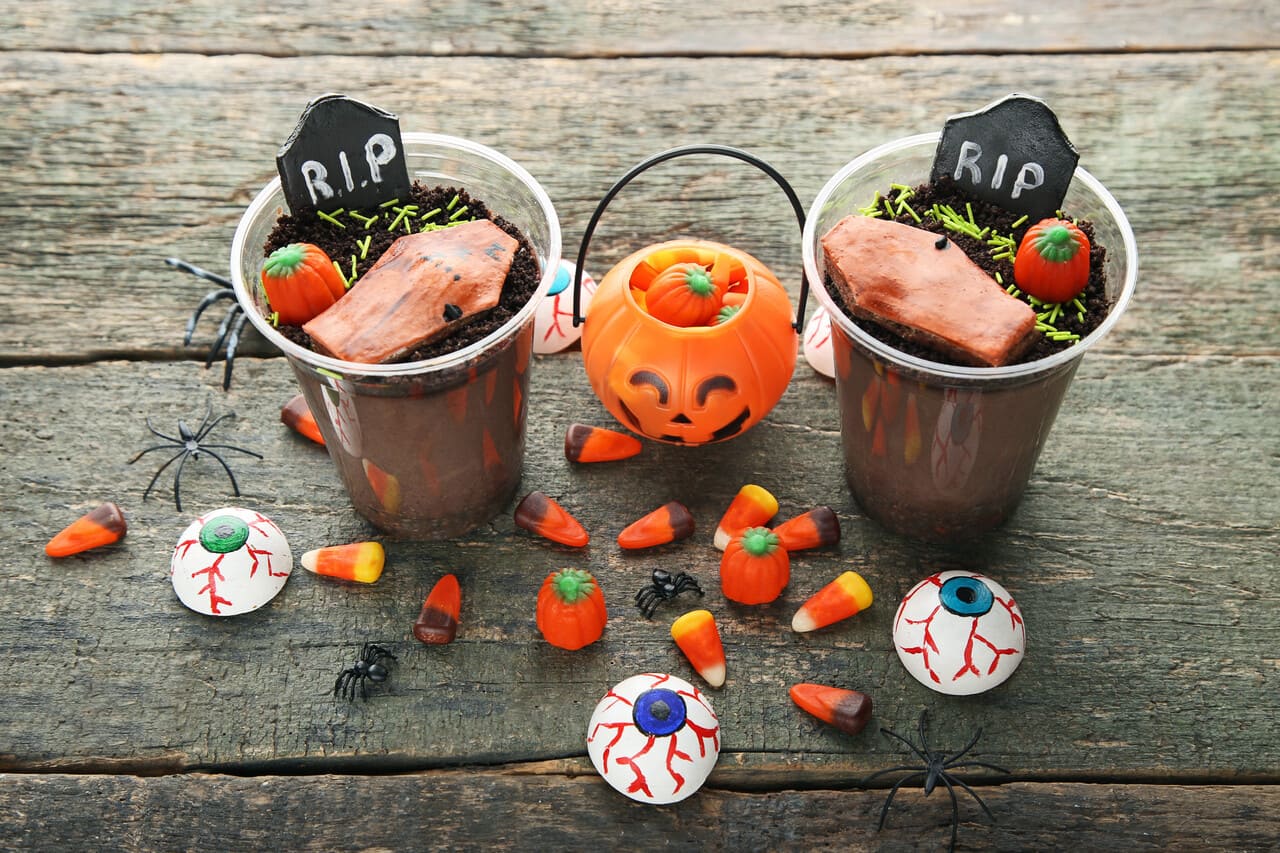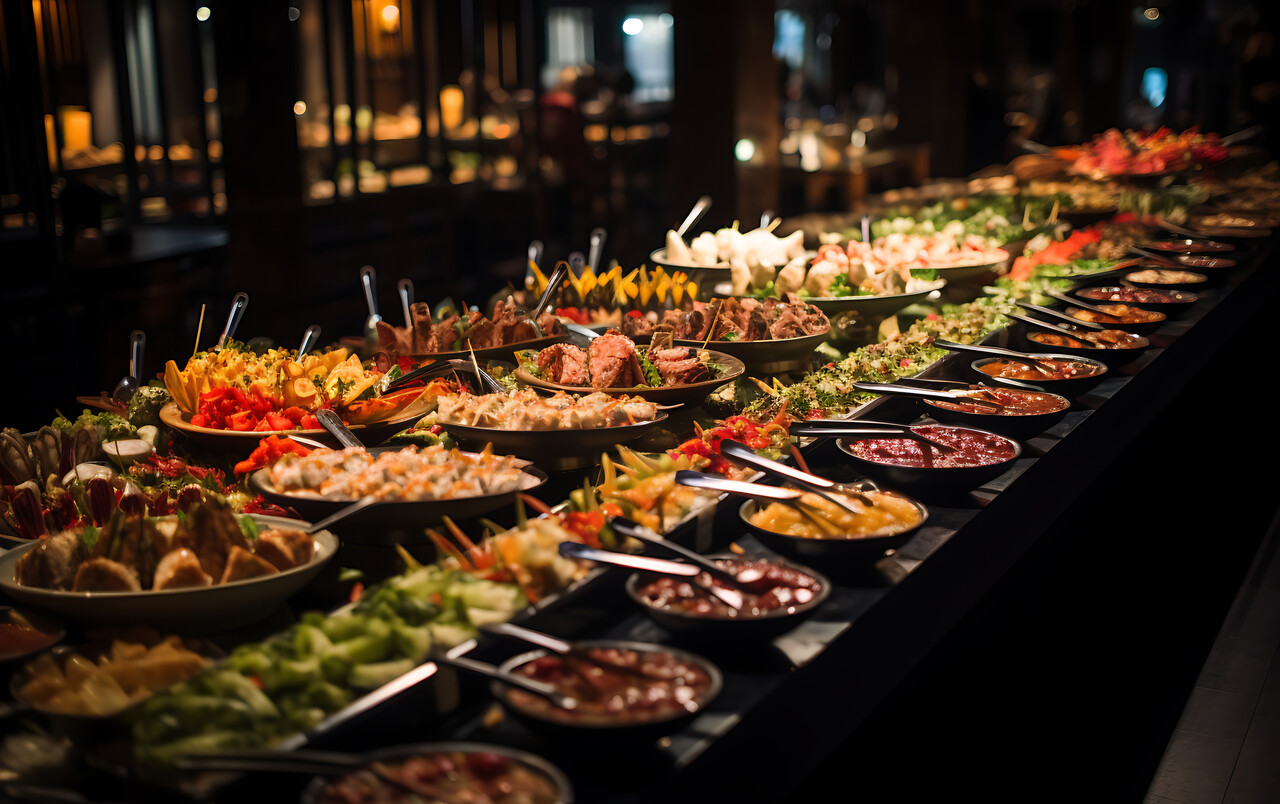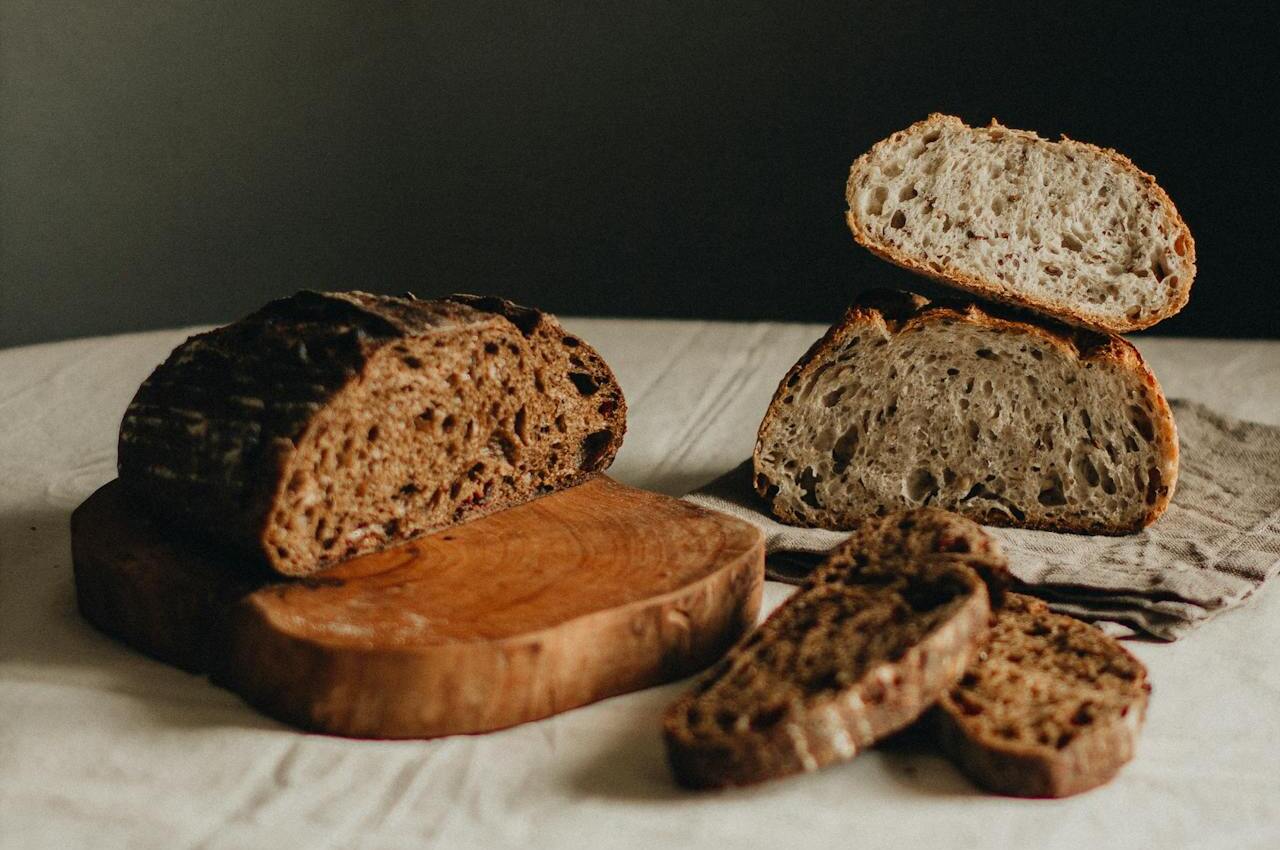13 Retro Kitchen Finds Only Seen in Thrift Stores Now
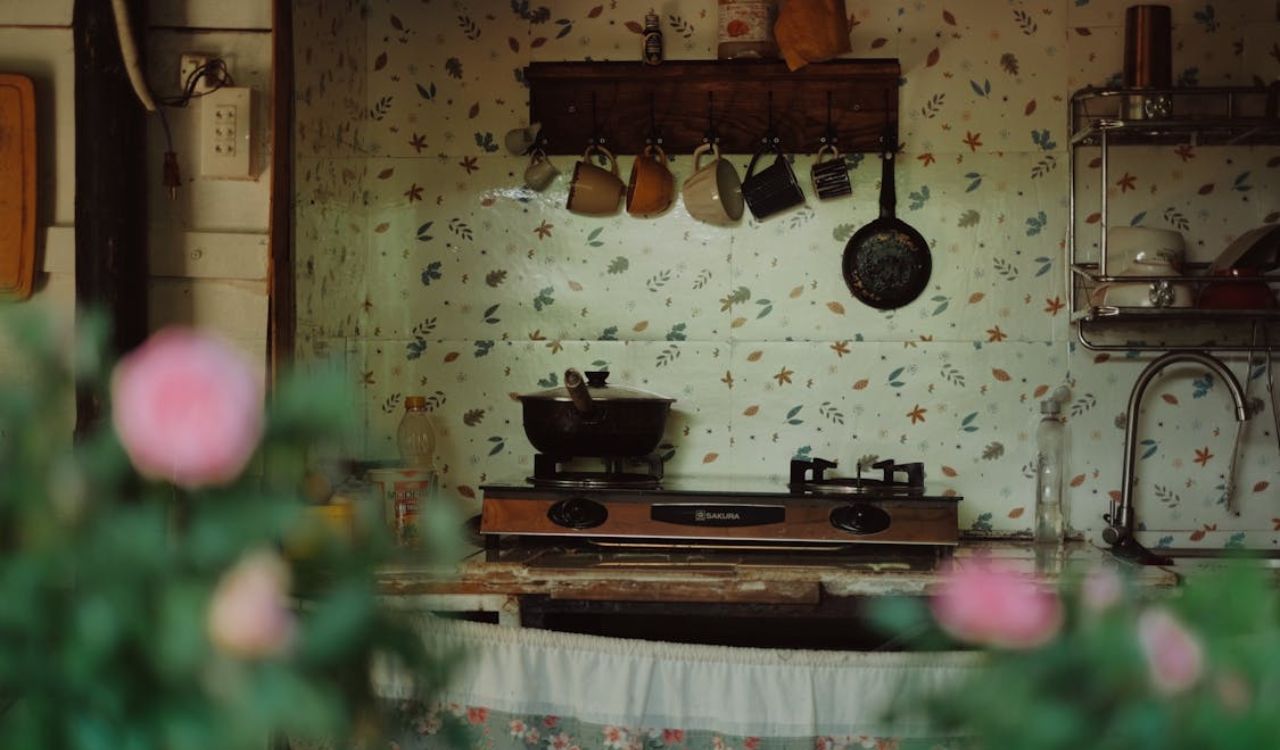
Walk into a thrift shop, and you may feel like stepping back in time. Among the mismatched mugs and shelves of cookware, treasures from kitchens past still appear. Retro kitchenware was built for durability, and decades later, many of these pieces remain in circulation. They combine nostalgia with practicality, whether you want to use them daily or display them as vintage décor. From colorful Pyrex bowls to quirky salt shakers, these thirteen items are the kinds of thrift store finds that carry history, charm, and a touch of old-fashioned craftsmanship.
1. Vintage Cast Iron Skillet
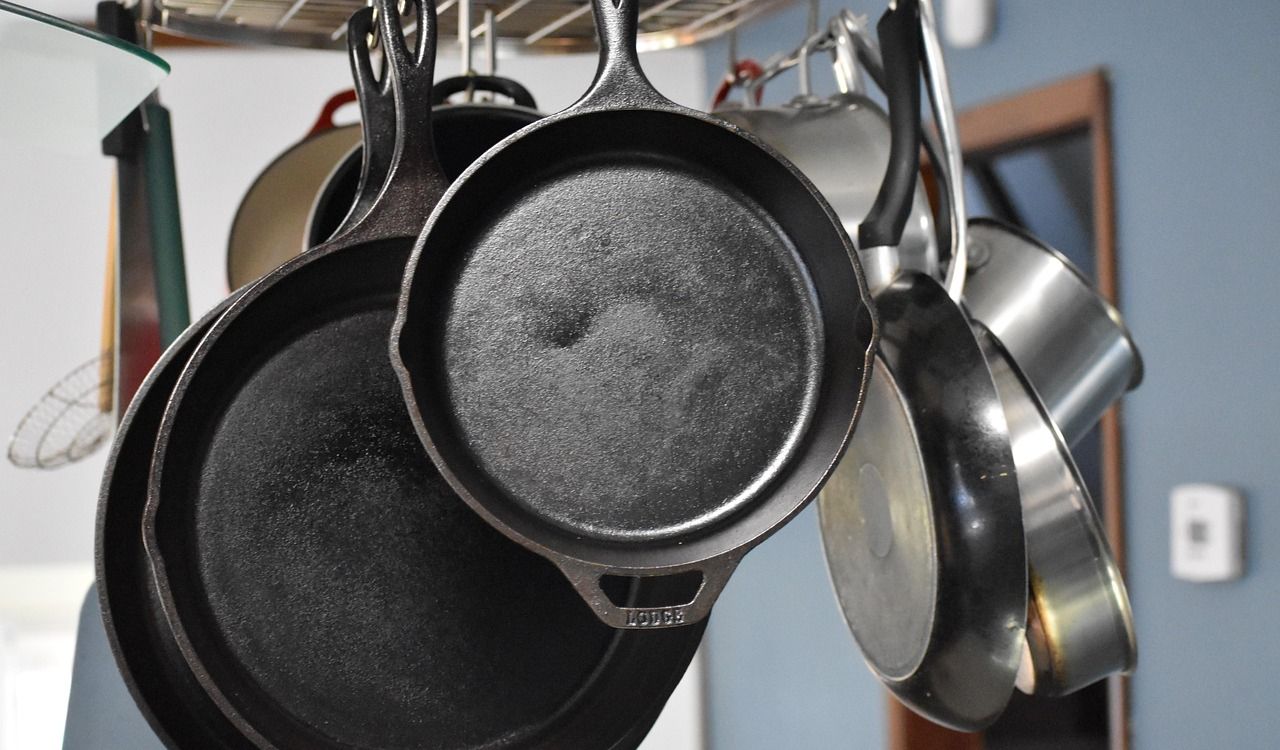
A vintage cast-iron skillet is one of the most durable pieces of cookware ever made. Collectors prize brands like Griswold and Wagner for their smooth surfaces and quality craftsmanship. Many skillets have survived generations, and even rusty ones can be restored through cleaning and reseasoning. Found in thrift stores, they are valued for both function and history. A good cast-iron pan can cook everything from cornbread to steak, while connecting you to a tradition of cookware built to last a lifetime. Their weight and patina signal authentic quality.
2. Pyrex Mixing Bowl Sets
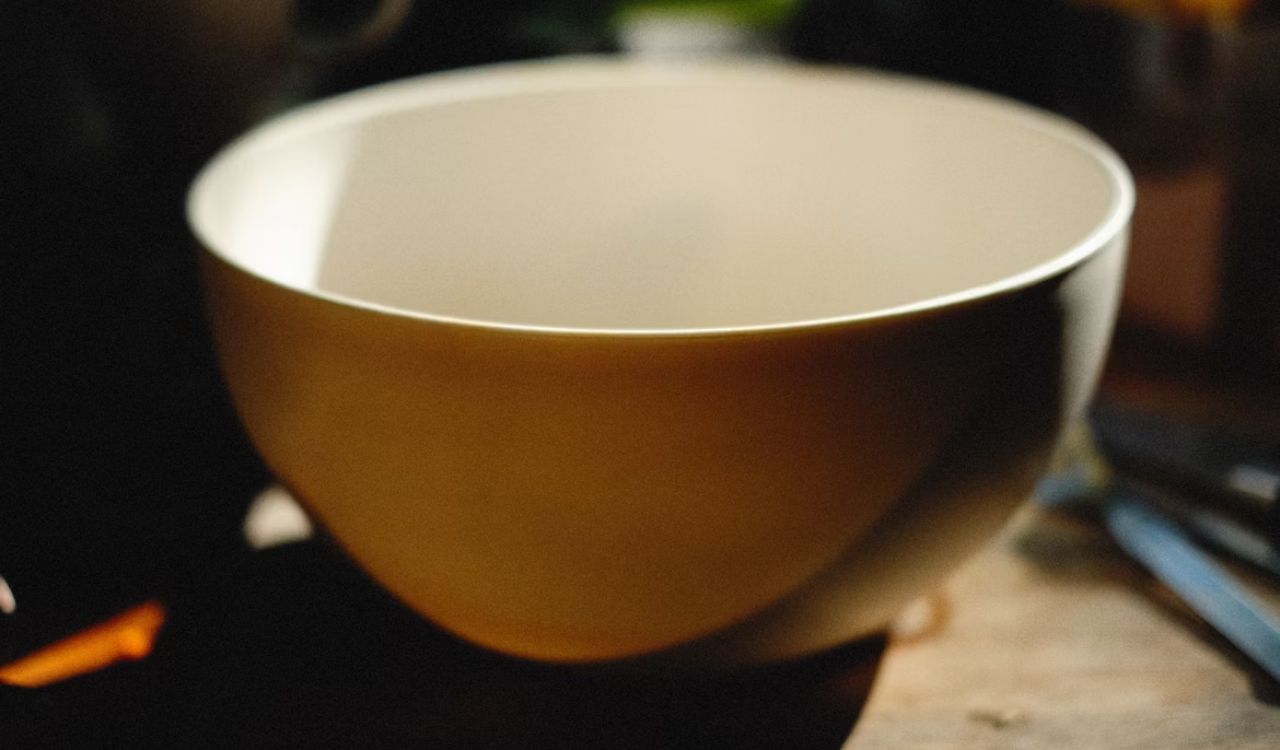
Colorful Pyrex mixing bowls from the 1940s through the 1970s remain highly collectible. Patterns like Butterprint, Gooseberry, and Crazy Daisy give them a nostalgic charm, while their durability keeps them useful in modern kitchens. Many thrift stores display mismatched pieces, allowing shoppers to build sets over time. These bowls are versatile for mixing, serving, and baking, making them as practical today as decades ago. Their bright colors and sturdy glass represent mid-century design, and for many families, they bring back memories of baking and family gatherings.
3. Fiestaware Dinnerware
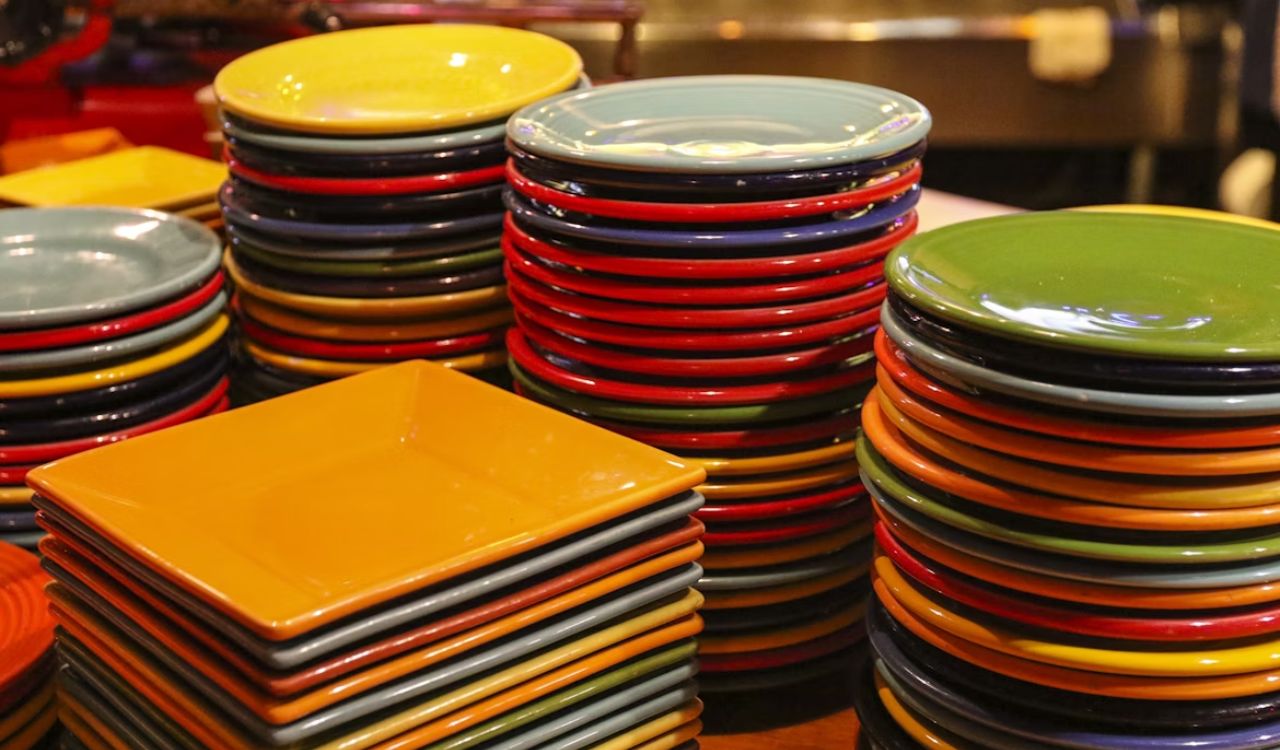
Fiestaware’s bold colors and art deco style made it a household staple beginning in the 1930s. Its plates, bowls, and mugs are still in production today, but the older pieces have a heavier, more distinctive quality. In thrift stores, you may find odd pieces that once belonged to complete sets, often in classic shades like turquoise, red, or chartreuse. Collectors appreciate vintage Fiestaware for its craftsmanship and lively hues that brighten tables. Even a single thrifted plate or cup can become a cheerful accent and a nod to American design history.
4. Flour Sifter with Hand Crank
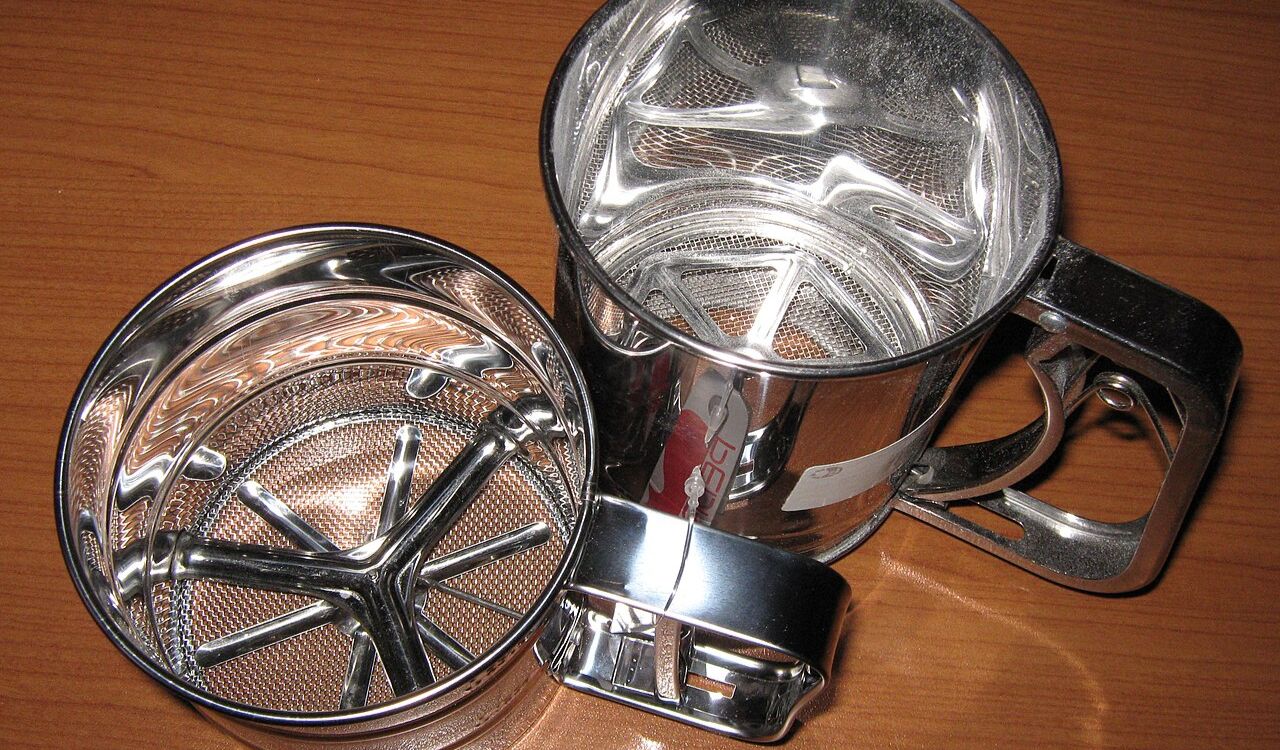
Before modern baking gadgets, cooks relied on hand-crank flour sifters to aerate and measure flour. These simple metal tools featured a handle that turned rotating blades, pressing flour through a mesh screen. Vintage sifters often have painted handles, decorative graphics, or brand logos that add character. Many are still functional today, making them both practical and decorative. Found in thrift shops, they represent a time when every baker had one close at hand. Even if retired from regular use, they make charming display pieces for kitchen shelves.
5. Mechanical Kitchen Scale
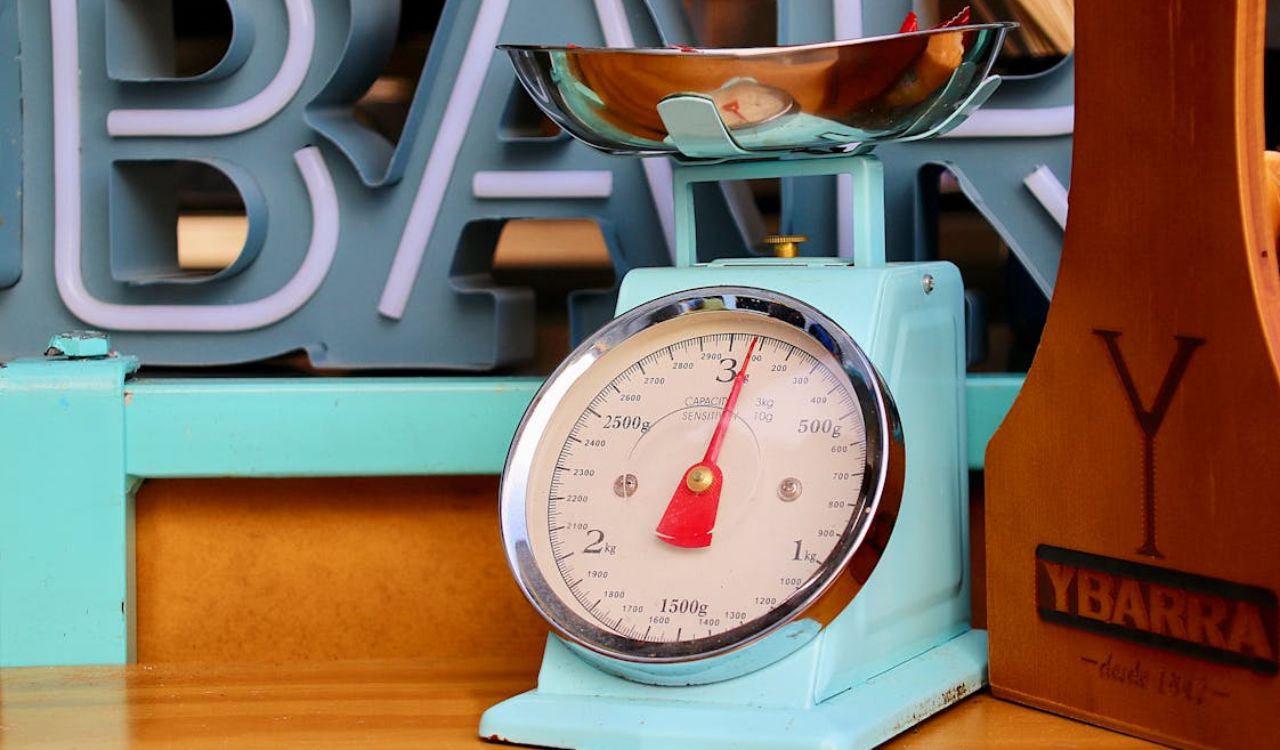
Mechanical kitchen scales were once essential for weighing ingredients, especially before digital scales became common. Typically made of cast iron, chrome, or enamel, they feature a needle gauge or tray balanced on springs. In thrift stores, you may spot models from the mid-20th century with retro typography and sturdy construction. Some still work reliably, while others are collected for their nostalgic design. Whether restored for accurate use or repurposed as décor, these scales capture the resourcefulness and charm of older kitchens, where measurement was as much about practicality as style.
6. Hoosier Cabinet
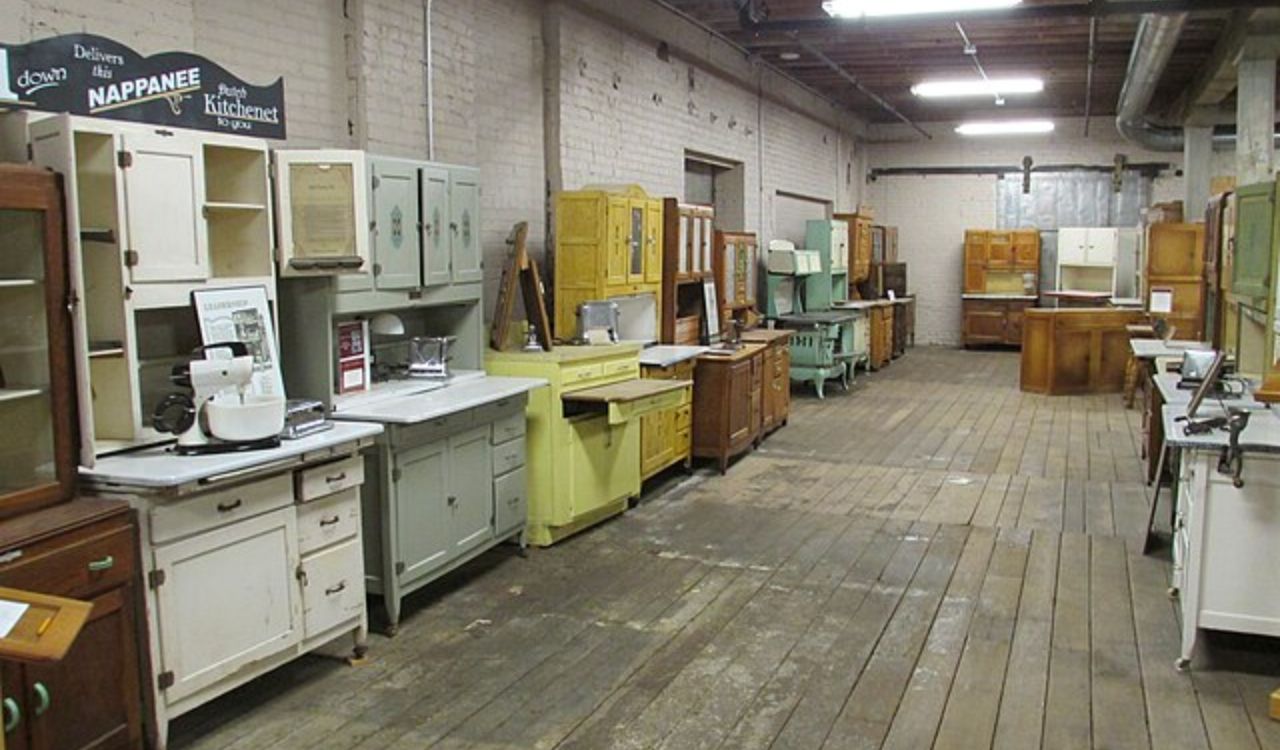
A Hoosier cabinet was the ultimate kitchen workstation for early 20th-century homes. These free-standing cabinets combined shelves, drawers, flour sifters, spice racks, and a pull-out counter into one compact unit. Mass-produced in the early 1900s, they eventually faded as built-in cabinetry became the norm. Today, they occasionally appear in thrift or antique shops, often showing signs of age but full of history. Collectors restore them for both beauty and function, while others use them as statement furniture. A Hoosier cabinet reflects the ingenuity of a time when efficiency defined kitchen design.
7. Enamelware Pots and Pans
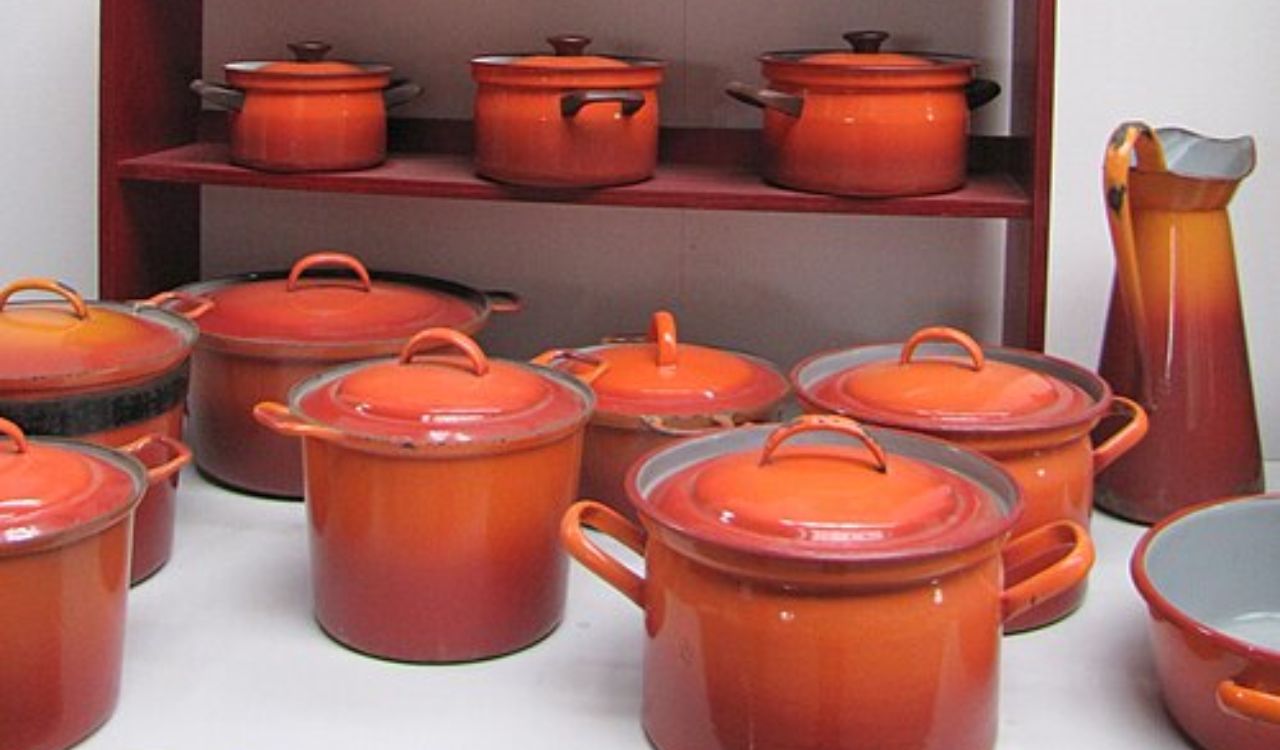
Enamelware, with its porcelain coating on metal, became popular in the 19th and 20th centuries for its durability and easy cleaning. Often made in bright colors or with speckled designs, these pots and pans remain common in thrift shops. Some show chips that expose the metal beneath, but many are still usable and safe. Their rustic look makes them favorites for collectors and decorators. From soup pots to coffee kettles, enamelware combines practicality with nostalgic appeal, reminding many of farmhouse kitchens and family meals prepared in sturdy cookware.
8. Hand-Crank Egg Beater
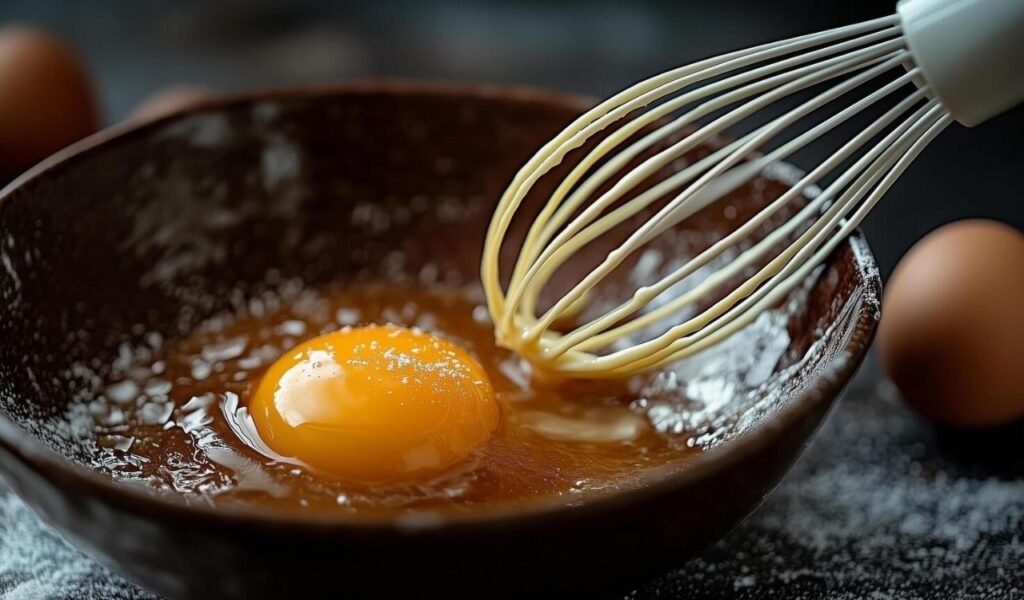
Long before electric mixers, cooks used hand-crank egg beaters to whip eggs and cream. These handheld devices often came with wooden knobs or chrome handles, and their simple gear design made them dependable tools. Vintage examples found in thrift stores are sometimes still usable after a quick cleaning. They represent a time when kitchens relied on manual effort and ingenuity. Even if not pressed into service, they add character as retro decorations. Displayed in a utensil jar or on a shelf, they evoke a simpler, hands-on approach to cooking.
9. Depression Glassware
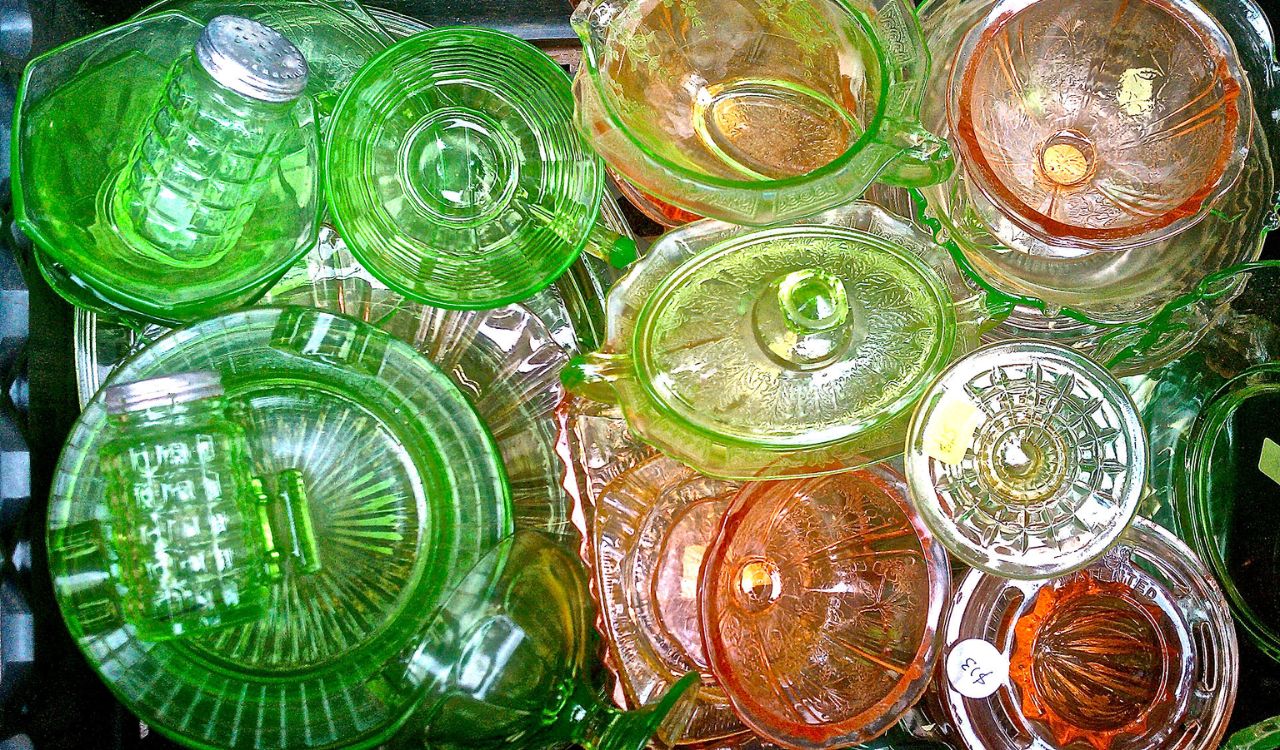
Depression glass, produced during the 1920s and 1930s, is known for its translucent colors and pressed patterns. Often given away as promotional items during the Great Depression, these pieces became a household staple. In thrift stores today, you might find tumblers, serving bowls, or candy dishes in shades of pink, green, or amber. Collectors value them for their beauty and historical significance. Even mismatched pieces can be used to serve drinks or desserts. They embody resilience and creativity during hard times, while bringing a vintage sparkle to modern tables.
10. Novelty Salt and Pepper Shakers
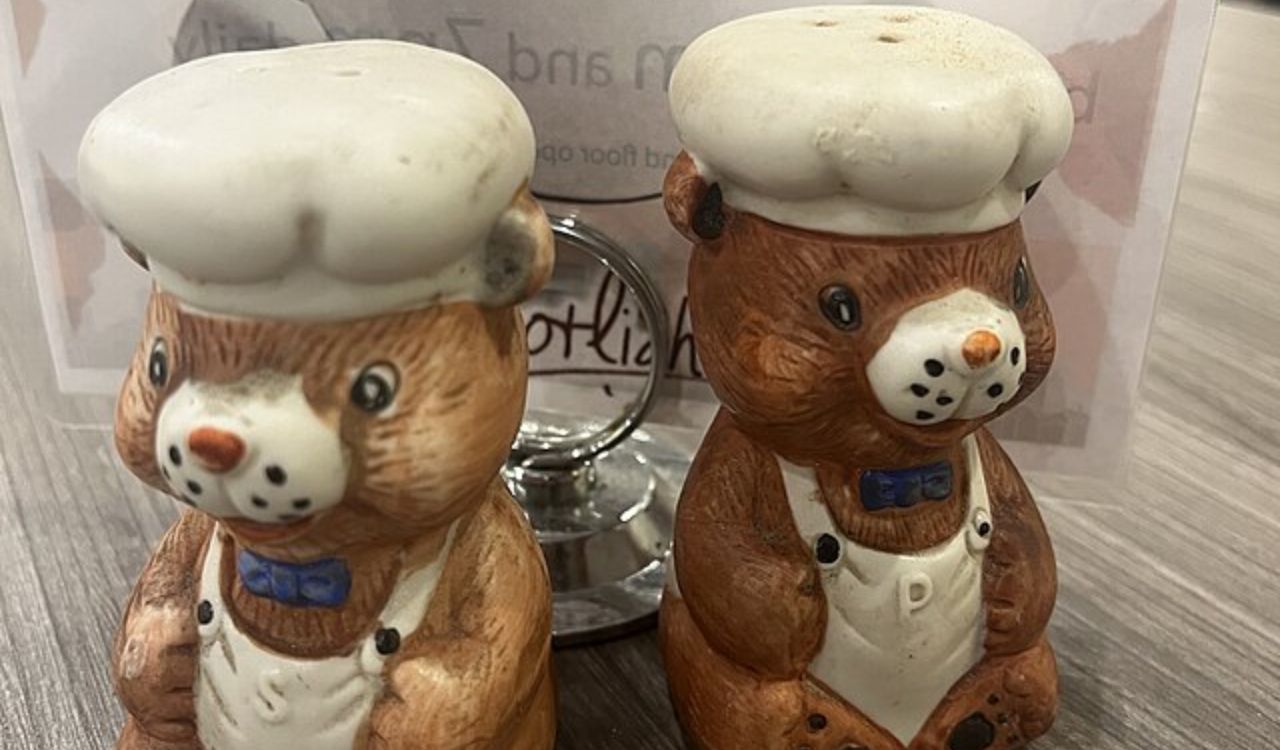
Salt and pepper shakers were not just functional. They were decorative and often whimsical. From mid-century animal designs to souvenir sets from tourist spots, these collectibles show up regularly in thrift stores. Many feature hand-painted details, unique shapes, or bold colors. Small and affordable, they were popular gifts, which explains their abundance today. Collectors prize unusual designs, but even common sets add charm to everyday meals. A thrifted pair of novelty shakers is both practical and a conversation starter that nods to playful mid-century kitchen style.
11. Retro Metal Bread Box
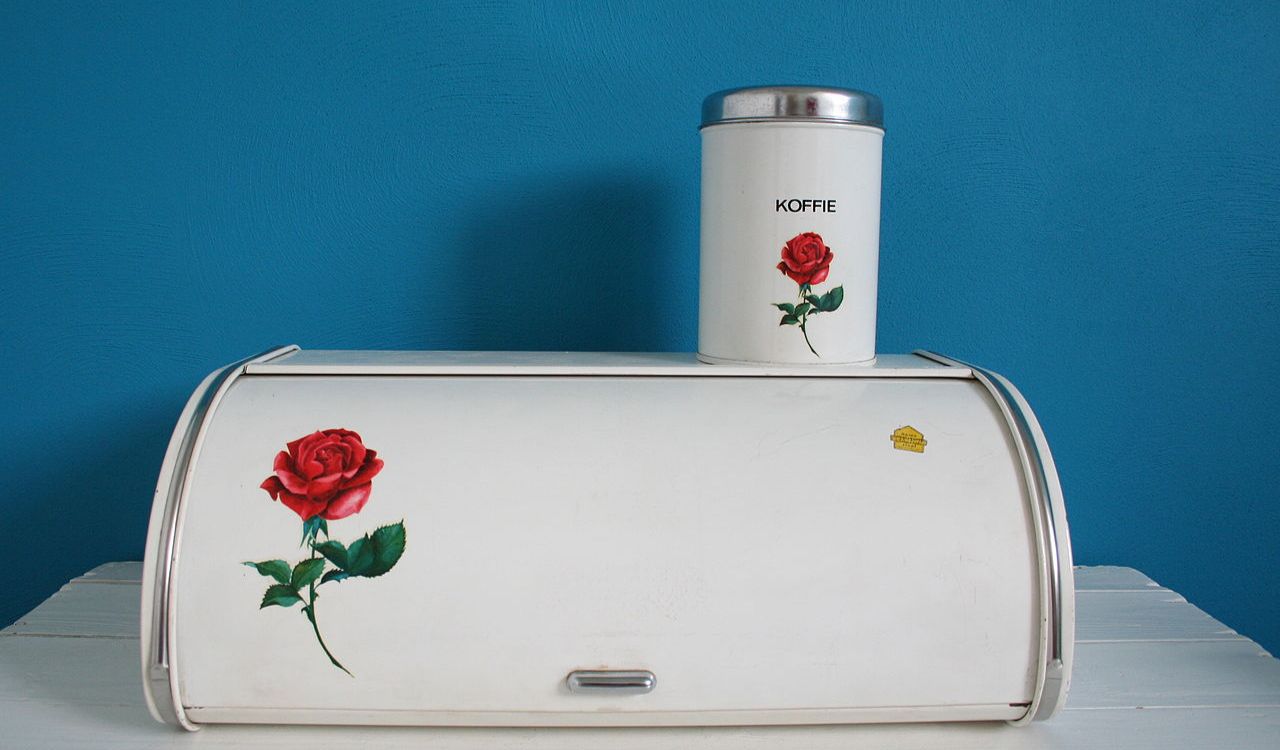
Bread boxes were once standard in every household to keep loaves fresh. Mid-century models were typically made of painted metal with curved lids or bold lettering. Today, thrift stores often carry worn but restorable bread boxes that can be cleaned and repainted. They remain functional for storing bread, snacks, or kitchen odds and ends. Their vintage look also makes them decorative pieces. A metal bread box captures the retro charm of kitchens from the 1950s and 1960s, when form and function came together in everyday items.
12. Percolator Coffee Pot
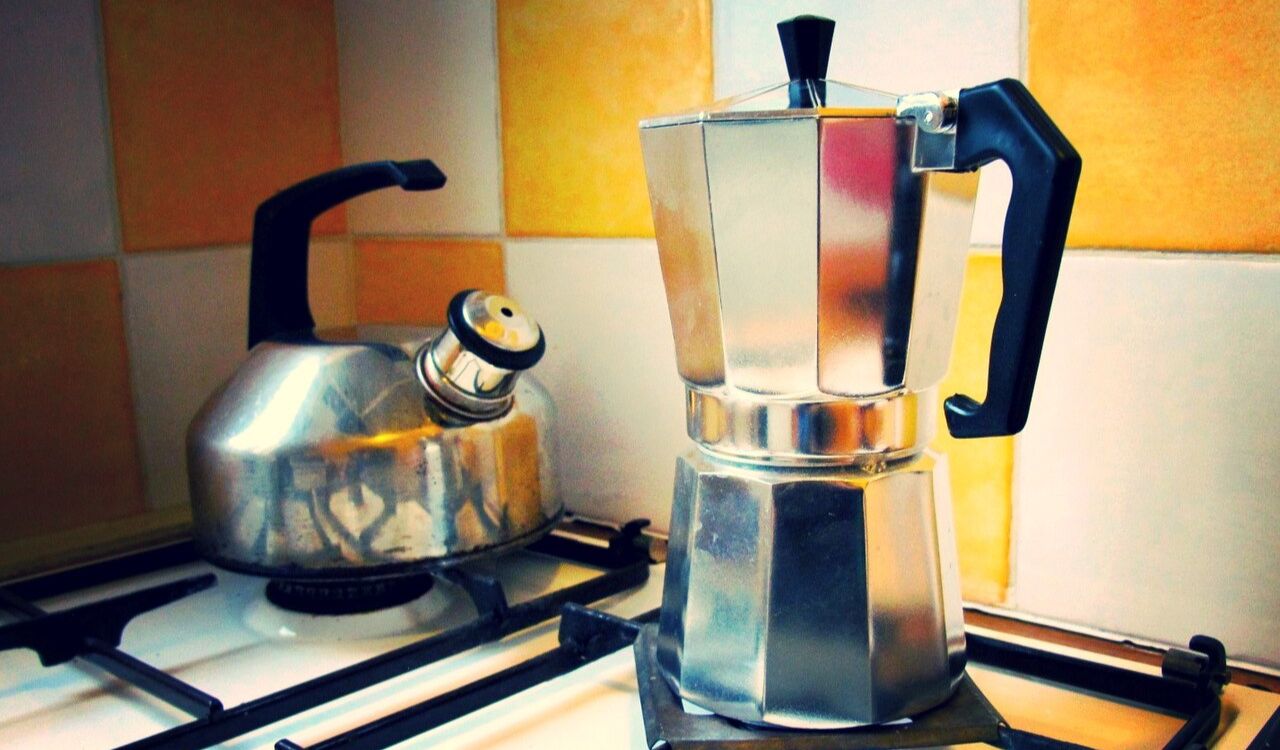
Before drip machines and single-serve brewers, percolators were the standard for making coffee. These pots cycled boiling water through grounds, producing a strong, aromatic brew. Many mid-century models were chrome or enamel, often with glass knobs that let you see the coffee bubbling. Thrift stores frequently carry percolators, some still functional and others kept for decorative value. They symbolize a time when brewing coffee was an event that filled the kitchen with sound and aroma. Restored or displayed, a percolator adds retro character to any kitchen.
13. Vintage Tupperware Containers
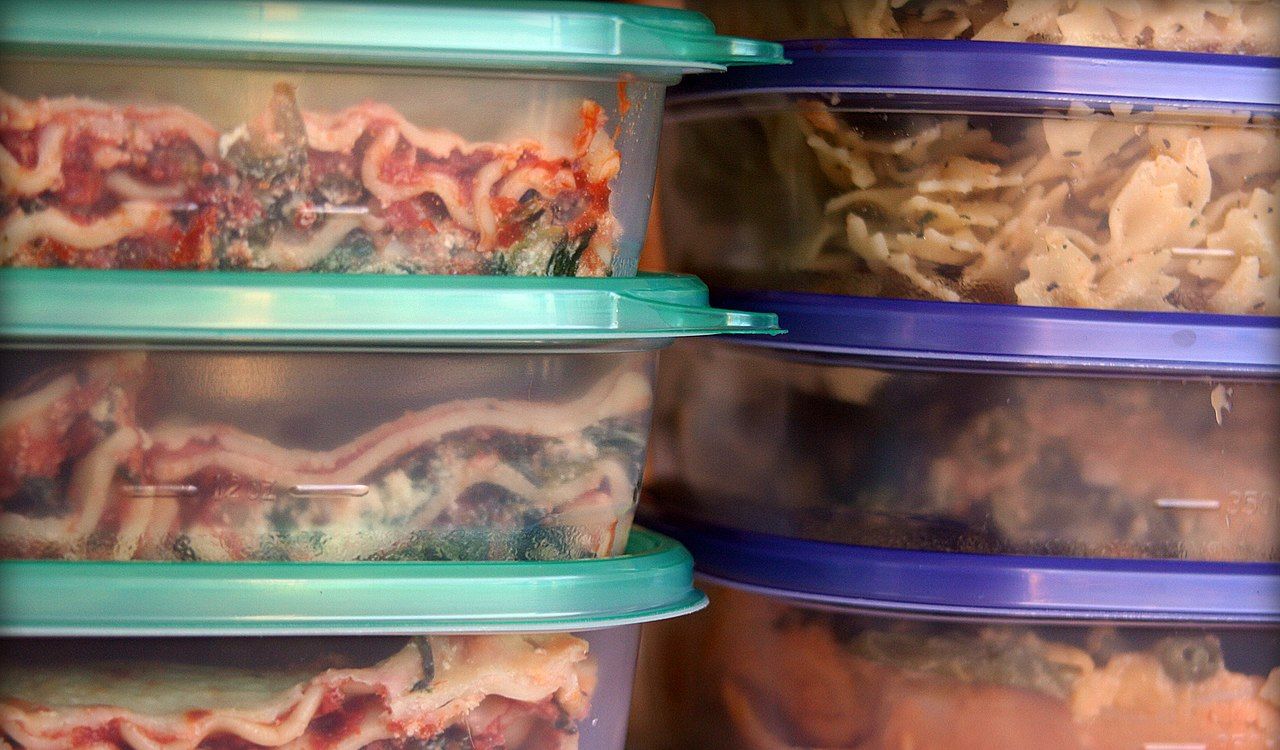
From the 1950s through the 1980s, Tupperware became a household name thanks to its airtight “burp” seal and bright pastel colors. These plastic storage containers were sold at Tupperware parties, where their durability and practicality made them wildly popular. Today, thrift stores often have stacks of vintage pieces in classic hues like avocado green, orange, and harvest gold. Many are still perfectly usable, while others are collected for their nostalgic charm and retro design. They represent the rise of modern convenience in postwar kitchens and remain an iconic symbol of mid-century domestic life.


